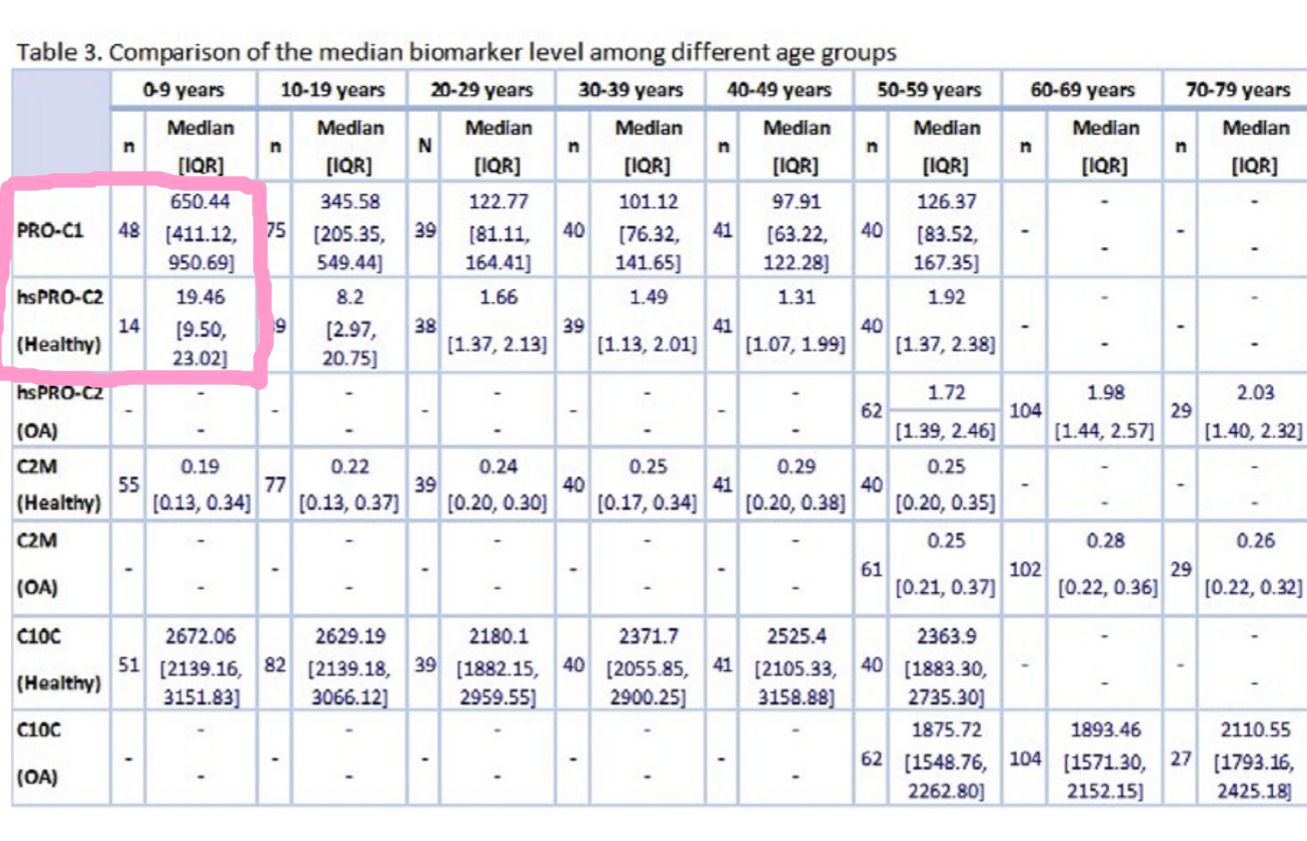Age-specific changes in collagen remodelling in a healthy population
D. Sinkeviciute Osteoarthritis and Cartilage VOLUME 28, SUPPLEMENT 1, S62, APRIL 01, 2020
Purpose: There is a need to investigate the age characteristics and natural history of collagen turnover biomarkers to maximize their potential use in osteoarthritis (OA) (Tables 1 and 2). Collagen turnover is an essential part of growth and can vary as a function of age and disease. Several collagen turnover biomarkers, such as the formation of type II collagen (hsPRO-C2), matrix metalloproteinase-degradation of type II collagen (C2M) and degradation of type X collagen (C10C) are currently utilized as research tools in the OA field: hsPRO-C2 and C10C have both showed the ability to separate OA patients from healthy individuals, while C2M is elevated in knee OA patients compared to pain-free controls and was associated with KL-2 score and levels of chronic inflammation in the knee OA group. The aim of this study is to investigate and characterize collagen turnover biomarkers as a function of age in a healthy population and to compare healthy levels to those measured in OA patients.
Methods: Circulating levels of the biomarkers PRO-C1 (formation of type I collagen), hsPRO-C2, C2M and C10C were measured in serum from 143 healthy children and adolescents (77 females, 66 males; age range: 0-19), and 161 healthy adults (81 females, 80 males; age range: 20-59). Subjects were divided into 10-year age groups according to age. Spearman’s correlation was performed to explore the associations of the biomarkers to age. Additionally, the 10-year age groups were compared using Kruskall-Wallis non-parametric test with Dunn’s post-hoc test to adjust for multiple comparisons, where p<0.01 was considered significant. Additionally, for comparison with OA patient biomarker levels were included. The OA group consisted of 199 Caucasian patients (115 females, 84 males, age range: 50-79).
Results: Serum levels of the two collagen formation biomarkers PRO-C1 and hsPRO-C2 showed a strong to moderate negative correlation with age (PRO-C1: rho = -0.72, p<0.0001, 95% CI -0.77 to -0.66 and hsPRO-C2: rho= -0.50, p<0.0001, 95% CI -0.60 to -0.39 respectively) (Figure 1). Both formation biomarkers had highest levels in the youngest age group from 0-9 years of age. The two collagen degradation biomarkers C2M and C10C showed a weak or no association to age (rho = -0.18, p=0.0024, 95% CI 0.64 to 0.29 and rho= -0.09, P=0.1112, 95% CI from -0.21 to 0.022). There was no statistically significant difference between aging and OA biomarker levels, however when comparing healthy and OA 50-59 years group, C10C was markedly lower in the OA group (p=0.0012) (Figure 2).
Conclusions: The present findings demonstrate that formation of collagens, measured by PRO-C1 and hsPRO-C2, is associated with age, and shows to be increased during the first 9 years of age. No association of age is found with the degradation biomarkers C2M and C10C. This needs to be accounted for when measuring collagen turnover across different age groups. The markers, except for C10C, do not appear to discriminate OA from healthy in our study, however they may reflect disease activity and may be used to monitor changes to disease. C10C, within an age group, can distinguish between healthy and OA, which confirms a previous report.















